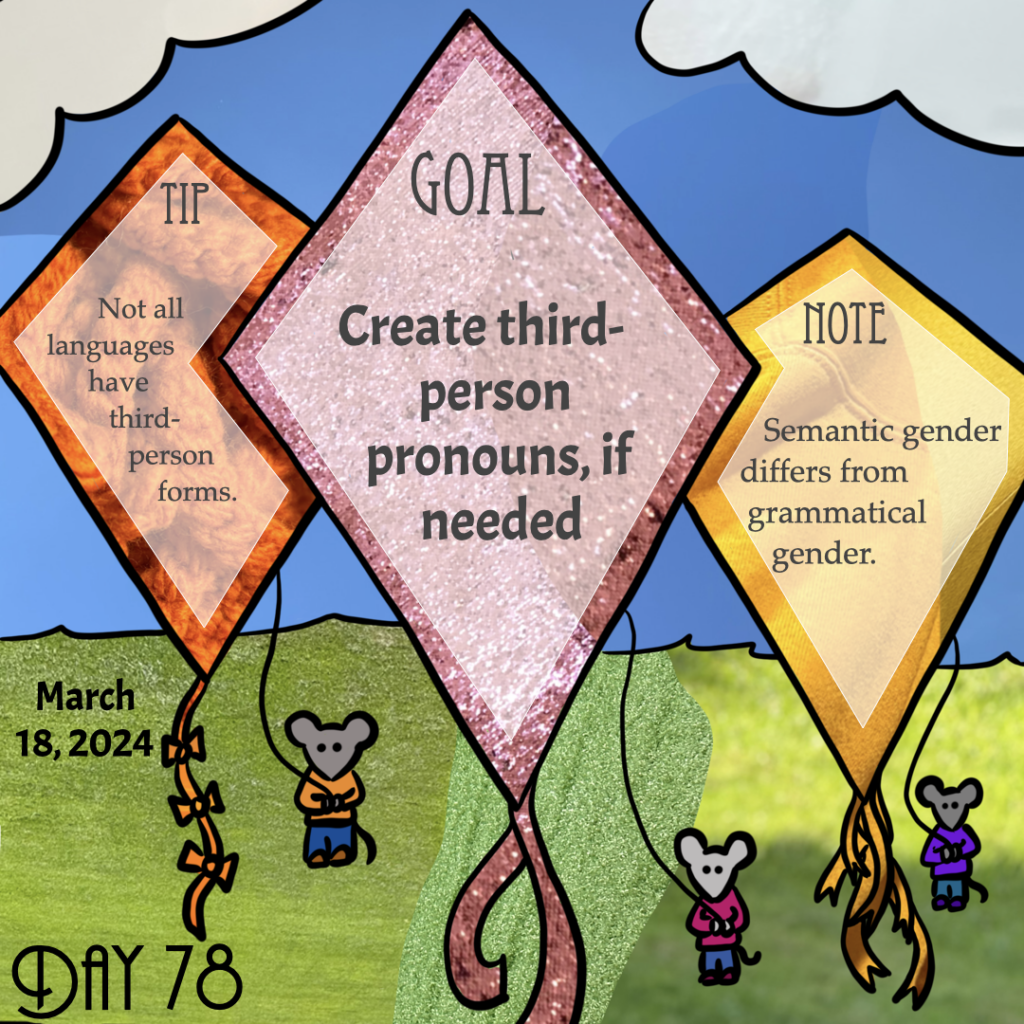
Goal: Create third-person pronouns, if needed
Note: Semantic gender differs from grammatical gender.
Tip: Not all languages have third-person forms.
Work focus: Create/Make/List
As a first note, you may have decided against having any third-person pronouns in your language. If that’s the case, you can start jotting down ideas for how you might use demonstrative forms when a third-person pronoun would be appropriate (e.g. rather than saying something like “I see it,” you might say “I see this” or “I see that”). If you wanted to indicate animacy or noun class within that system, start brainstorming ideas now! (There will be days later on dedicated specifically to demonstrative pronouns, so you will have more time to actually develop that system.)
If you do have third-person pronoun forms, then today is the day to create them! In some languages, the third-person forms indicate animacy and/or gender separately from the rest of the language (note that first- and second-person forms typically refer to an animate referent while third-person pronouns may not). You may want to develop additional third-person forms beyond anything your nouns inflect for. Just remember that, if you do, semantic gender differs from grammatical gender, where grammatical gender is another way of talking about noun classes.
Modern English third-person singular pronouns are used in a way that indicates perceived semantic gender and animacy. Typically, “it” refers to inanimate referents (though some non-binary individuals prefer “it” as their personal pronoun), and “he” and “she” refer to animate individuals (though you can also refer to things such as cars as “she”). Not all languages have those distinctions. For instance, tā in Mandarin Chinese is a third-person pronoun form that is used to indicate any third-person referent, whether it is a person or an object.
If you already have a series of noun classes in your language, make sure the forms you create make sense with that system. It may work best to have a third-person form representing each of the classes. However, it may also make sense that, over time, some of your noun class pronoun forms conflated.
The pronoun system is one I see beginning conlangers struggle with quite a bit—if, for no other reason, it can be difficult to imagine a system that works quite differently from the one you’re used to using on a daily basis. It is usually easier for people to imagine a system that specifies more than what’s required in their own system rather than a system that specifies less. For instance, it might be easier to imagine a system where you’d need seven different third-person pronoun forms to reflect animacy, class, and number than it is to imagine using a system where there is only one form that covers all third-person referents. All that is to say, make your pronoun system consonant with the other details of your language to ensure you’re crafting a full system rather than a collection of features.
